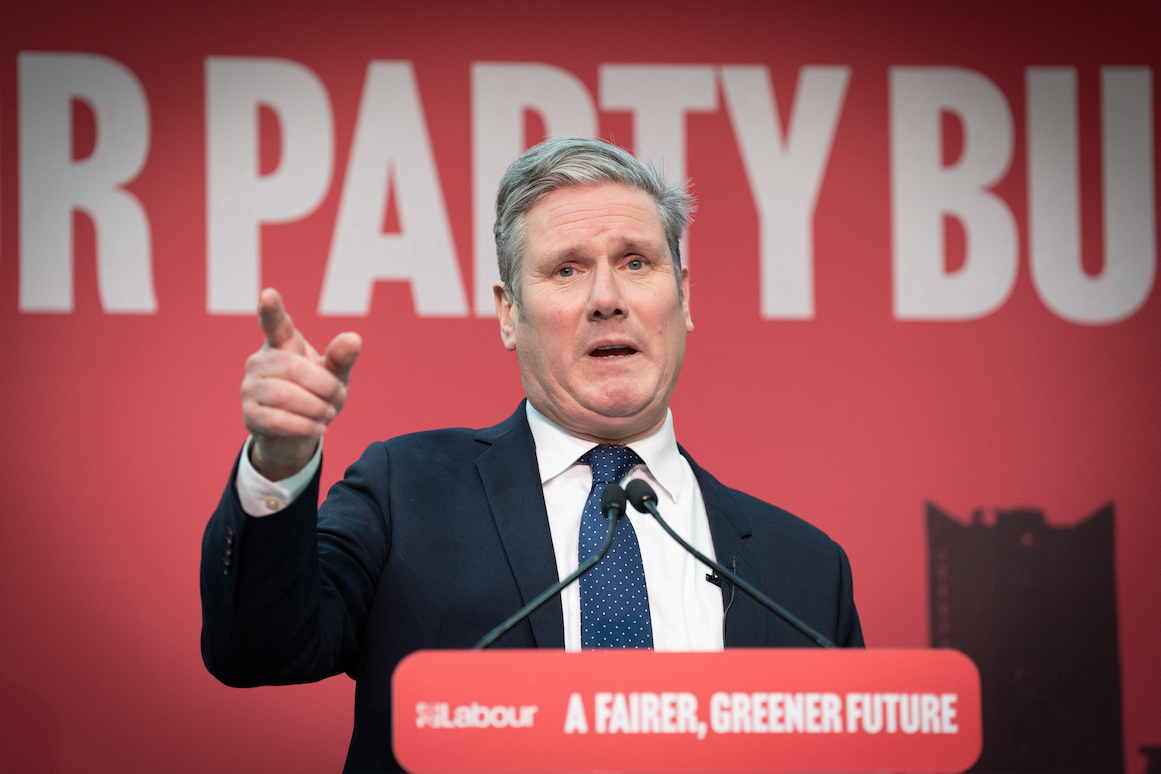Upon becoming Labour leader in 2020, Sir Keir Starmer was characterised as a shifty managerialist by prime minster Boris Johnson. The man in the mask, sat all alone on the frontbench opposite, was a lawyerly naysayer — someone whose career would forever be stained by his resistance to Brexit and for whom “fence-sitting” was not only strategical, but deeply ingrained in his political psyche.
He was “captain hindsight” by name, opportunist by nature. A technocrat leading an unreformed, unreformable party.
Starmer initially showed little political will to try and counter this characterisation. In fact, throughout Johnson’s premiership, the Labour leader stuck to a strict script: he would project competence in the hope that his self-contained professionalism would provide a reassuring contrast with Johnson’s showier, more chaotic style.
So when it became clear that Johnson’s tenure as PM was over, commentators questioned whether the Labour leader’s protean positioning would play against a more measured opponent. For Johnson was the prism through which Starmer constructed his political appeal. And like most in 2020, the Labour leader figured that Conservative regicide with an 80-seat majority was unforeseeable.


In this sense, Liz Truss was not only Boris Johnson’s preferred heiress but Keir Starmer’s. Under Truss, Starmer did not need an image change — her’s was a premiership of Johnsonite chaos minus-the-style: an untenable hybridity.
Sunak’s strategy
On 25 October 2022, Sunak was coronated as prime minister. His pitch over the summer had been that it was he who Labour truly feared. As prime minister, he would bring integrity and competence to the role, eating into Starmer’s “soft” polling advantage.
In some striking ways, Sunak and Starmer are similar politicians. Both entered parliament in 2015, both have technocratic instincts and both present as Mensheviks, pursuing the revolution gradually. Like Starmer’s struggle in 2020, Sunak’s task since October has been to clear up after an unrealistic predecessor, restoring electability and fiscal credibility.
In turn, the political stakes have notched higher. With Conservative strategists earmarking the winter of 2024 as the most likely date for the next general election, Starmer knows he needs to ensure that his polling advantage is not merely “soft”.
Professionalism with a purpose
There is no doubt that as an instinctively cautious politician, spontaneity is not Starmer’s strong suit.
In some senses, the publication of Gordon Brown’s “Report on the Commission of the UK’s future”, gestated over two years, is further proof of this. But Brown’s proposals, notwithstanding reports of last-minute attenuations, surprised many with their radicalism.
To the shock of the Westminster hive mind, Starmer was going off-brand.
The former prime minister set out 40 recommendations for constitutional change in the UK, covering rights, devolution within England, devolution to Scotland, Wales and Northern Ireland, intergovernmental cooperation and House of Lords abolition. All proposals contribute to the report’s big overarching argument: that the UK’s highly centralised state and its economic stagnation are linked.
In pursuing constitutional reform, Starmer knew he was greatly enlarging his infamously “small target”. Duly, the Conservative party’s lead attack dog, Lord David Frost, took aim in Thursday’s edition of The Telegraph:
Starmer’s plan would finish the UK as a unitary state and turn it into a “Union of Nations”. There would be a “Council of the Nations and Regions” to regulate co-operation between “the UK’s different governments”. Scotland would be able to run its own foreign policy by concluding its own international treaties, including with the EU. And the Supreme Court would settle any difficulties within Britain’s new Napoleonic system of governance.
But Frost’s political point here is a difficult sell. The Conservative party have spent the last two years castigating “captain hindsight’s” lawyerly conscientiousness and dull fence-sitting. How can he now be a Jacobin agitator?
It is also the case that the report’s key message, that political centralisation and economic stagnation are linked, is the underlying mission statement of the government’s own levelling up bill.
In fact, the Brown review was as all about stealing the government’s thunder on levelling up.
It saw Labour retreat from the progressive comfort zone of the big city and reconnect with the political priorities of Britain’s small towns and working class heartlands.
And in abandoning the path of least resistance so dramatically, it signals a significant strategical switch-up from Starmer.
Trading in the endgame
As this article has stated, Sunak’s greatest challenge to Labour was his perceived competency — territory Starmer had owned under Johnson. So, in response, the Labour Party is choosing to make inroads into the Conservative vision, challenging the party’s thought leadership on levelling up.
It also helps that Sunak’s reputation for “delivery” is under concerted challenge from within his own party. The prime minister, who showed such courage in standing up to his party over Trussonomics, has already accumulated a long list of U-turns during his short time in office. Just this week, the government backed-down on housing targets and backtracked on onshore wind.
This is a gift for Labour, who can paint their leader as strong and accuse Sunak of weakness. It is an obvious attack line for Starmer, who branded Sunak the “blancmange Prime Minister” at PMQs this week. As we edge closer to the 2024 general election, expect such assaults to intensify.
Make no mistake about it: we are in the endgame now. That Starmer has put his hindsight-heavy, policy-light days behind him is as clear a signal as any.
Boldness does not come naturally to the Labour leader — but it is the perfect response to Sunak’s stumbling start.

